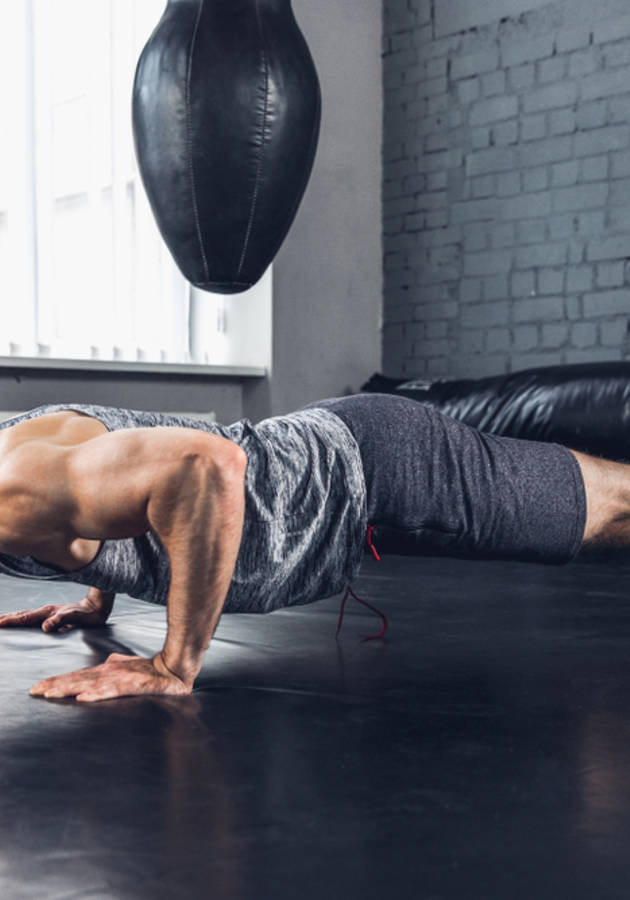Even though your parents couldn't care less about them, nowadays, exercising and dieting are multi-billion-dollar industries.
Whether it's personal trainers or gym memberships, fitness videos or bodybuilding magazines, weightlifting gears or diet supplements - most of the people you know have probably spent at least a hundred dollars during the last month only.
And probably you are not the exception.
There's a problem with the market, though. In order to go on making money, the people who sell you stuff that makes them rich are intrinsically motivated not to help you. Because if they do - ie, if some of their "get fitter" programs actually work - then everyone is just going to stop paying them.
This is what Michael Matthews, the author of Bigger Leaner Stronger (as well as his female version, Thinner Leaner Stronger), noticed early on in his bodybuilding career. “Every time you buy one of the big bodybuilding magazines,” he writes now, “you're paying to be lied to.”
How does he know that?
Because he tried everything and, after nothing worked, he tried reading books written by scientists. And he found out something that not many people in the industry would like to share with you.
“The real science of getting into incredible shape is very simple,” Matthews says at the beginning of Bigger Leaner Stronger, “much simpler than the fitness industry wants us to believe. It flies in the face of much stuff we see on TV, Instagram, and YouTube and read in books, articles, and magazines. "
It is this simple science that his books are all about. And we have the best bits from the one that made him a superstar.
Few Don'ts to Kick Things Off
Just like in Thinner Leaner Stronger, Michael Matthews starts by sharing some scientific definitions of the most important terms (energy, muscle, tissue, fat, diet…), and busting some myths you probably believe.
As far as Matthews is concerned, getting the perfect body is something achievable (science says so), and something that doesn't ask from you those many sacrifices or a six-hour-a-day workout regimen.
According to him:
• You don't need supplements to build a fabulous physique.
• You don't need to constantly change up your workout routine to “confuse” your muscles.
• You don't need to “eat clean” to get and keep lean.
• You don't need to stop eating carbs and sugars to lose weight.
• You don't need to eat small meals every few hours to “boost your metabolism.”
• You don't need to grind out hours and hours of boring cardio every week to get six-pack abs.
• You don't need to be at the gym hours per day and sacrifice your relationships with your friends and loved ones.
Sounds almost too good to be true, right?
Well, Mathews says that it isn't.
The 10 Absolute Worst Fat Loss Myths and Mistakes
Chances are you are already skeptical of Matthews and are reading this summary merely because you want to find a flaw in his methods.
However, in his opinion, this is only due to the fact that you’ve probably bought into at least several of the fat loss and muscle building mistakes circling around us all.
So, he wants to address them first.
Myth #1: “Calories In Versus Calories Out Is Bad Science”
Calorie counting works, and everybody who says it doesn’t, lies to you. The non-negotiable truth, the one set in stone by numerous scientific studies is this: you gain weight if you burn fewer calories than you consume.
Turn that around, and you have a functional equation for what it actually means to lose weight, i.e., eating fewer calories than the number of calories you burn.
Myth #2: “Carbs and Sugars Make You Fat”
Now that we’ve busted myth #1, myth #2 is dispelled by itself: regardless of how much carbs or sugar you eat, if you consistently consume fewer calories than you burn, you’ll lose weight. Period.
In other words, no particular food can make you fatter—only overeating can. Even the healthiest foods will make you gain weight if you consistently consume more calories than you burn.
Myth #3: “Some People Just ‘Mysteriously’ Can’t Lose Weight”
They overeat or, in the best-case scenario, are not counting their calories right. Mystery solved.
Myth #4: “You Can Eat and Drink Whatever You Want in Your ‘Cheat Meals”
Of course, this is not true. Eating too many calories during your cheat meal means that you will have to burn those calories afterward. Cheat too much or cheat too often, and the regular training regime won’t work anymore.
Myth #5: “You Can Burn the Fat Covering Your [Body Part]”
“Fat loss occurs in a whole-body fashion,” writes Matthews. “You create the proper environment (a calorie deficit) through diet and exercise, and your body reduces fat stores all over, with certain areas leaning out faster than others (more on why this occurs, you will see later).”
In other words, the number of sit-ups doesn’t matter: you’ll never have ripped abs until you start reducing your body fat levels adequately.
Myth #6: “Dieting Can ‘Damage’ Your Metabolism”
Dieting does produce metabolic dips, but studies have shown that even in the most extreme circumstances, this decline is negligible or, at least, can be easily reversed with excellent training and a proper diet.
Myth #7: “Dieting Can Send Your Body into ‘Starvation Mode”
First of all, there’s no such thing as “starvation mode.” Meaning, even if you starve—like, actually, truly starve—everything will be back to normal after some time (believes Michael: they have conducted a grim study which proves this).
And there’s no way that your metabolism will ever change in such a manner that you’ll have to start eating like an anorexic to keep up with it.
Myth #8: “Eating More Smaller Meals Is Better for Weight Loss Than Fewer Larger Ones”
Studies have shown that, ultimately, it makes no difference. What makes it is consistency.
In other words, once you’ve decided on your calorie intake, divide it up in as many meals as you like during a given day, provided you can stick to the routine.
Myth #9: “You Have to Exercise to Lose Weight”
If you don’t eat a lot, you’ll eventually lose weight. If you exercise while doing this, you’ll not lose muscle as well. It’s that simple.
Myth #10: “Cardio Is Better for Fat Loss Than Weightlifting”
Only doing cardio guarantees little in the way of weight loss, because it is too easy to eat the calories you burn, and because your body adapts to the exercise to reduce calorie expenditure.
Due to several physiological factors, adding resistance training to the cardio workouts should result in more fat loss despite the muscle gain.
The 10 Absolute Worst Muscle-Building Myths and Mistakes
Myth #1: “Heavy Weightlifting Makes You Stronger but Not Bigger”
According to Matthews, the idea that heavy weightlifting is merely for strength and not muscle gain is absolutely incorrect.
In fact, it’s quite the opposite: the most reliable way to gain muscles is by gaining a considerable amount of strength.
Myth #2: “Some Guys Just Don’t Have the Genetics to Get Big and Strong”
True, genetics has a say in how big and strong you can become.
Your bone structure says many things about you. Simply put, people with larger bones tend to be more muscular and to have higher testosterone levels, in addition to being more able to gain muscle faster when they start lifting weights.
However, unless you want to be a fitness competitor or a top-tier bodybuilder, you really don’t need to worry about anything.
The truth is you can gain more than enough muscle to look fantastic (as a rule of thumb, most guys need no more than 20 to 25 pounds of muscle to attain an impressive physique.)
Myth #3: “Heavy Weightlifting Is Dangerous”
Once again, this is partly true: the more demanding your workout regime is, the more risk you take to be injured in the process. After all, professional athletes suffer more injuries than regular people, don’t they?
But the benefits of heavy weightlifting are so many, that it is really less dangerous than other types of demanding exercise. And, don’t forget: dealing with risk is just part of life.
Myth #4: “You Can’t Build Muscle and Lose Fat at the Same Time”
If you are new to weightlifting, then—even though fat loss and muscle growth, physiologically, have “irreconcilable differences”—you’ll build muscle and lose fat at the same time even if you don’t want to.
However, if you’re six to eight months into your training regime, then you’ll have to optimize for one or the other.
Myth #5: “If You Do the Same Exercises Too Often, You’ll Get Stuck in a Rut”
Don’t let them fool you: you’ll get stuck in a rut only if you don’t challenge yourself (and your muscles).
The key to gaining muscle and strength isn’t changing the types of stimuli your muscles are exposed to—it’s making your muscles work harder.
That is why lifting heavier and heavier weights does the trick every time.
Myth #6: “You Must Use Bands, Machines, and Other Contraptions”
No, you don’t have to use bands, machines, and other contraptions—this is just one of the lies that exercising industry tells you so that you pay for your gym membership month after month for years.
The truth is, as shown by numerous studies, free weights are not only as good as, but superior to machines for gaining muscle and strength.
And the last time we checked, scientists didn’t have an agenda to prove this.
Myth #7: “You Should Spend Most of Your Time on Isolation Exercises”
“One of the biggest fitness mistakes people make is underestimating the importance of compound exercises,” writes Matthews.
Isolation exercises should only take about 20% of your time; compound exercises should fill in the rest.
Myth #8: “Progressive Overload Isn’t That Important”
If you’ve read our short explanation below myth #5, you already know that this is also not true. In fact, the very opposite is.
In its essence, getting fitter is as easy as 1-2-3: follow a proven progression model, track your workouts, and adjust your diet and training as needed.
Myth #9: “You Have to Get a Big Pump to Get Bigger”
“Pumps” do have a positive effect, but, enjoyable as they are, they are not as strong muscle-building stimuli as the mechanical tension.
That’s why, no matter what your trainer says, it is not that smart to prioritize pumps in your training.
Myth #10: “You Have to Do Cardio to Have a Great Physique”
Cardio actually interferes with strength and muscle gain—both in the short and in the long term. However, it does have significant health benefits if you do it correctly.
The Scientific Laws About Rapid Fat Loss and Building Lean Muscles
Most of these we’ve already shared with you while summarizing Thinner Leaner Stronger, so here we’ll just list them and add a single-sentence explanation next to them.
The 3 Little Big Things About Rapid Fat Loss
Rule #1: Energy balance is the king. In other words, the following will always be true: weight loss is the result of eating fewer calories than you burn.
Rule #2: Macronutrient balance is queen. “A calorie of protein does very different things in your body than a calorie of carbohydrate or dietary fat,” says Mathews. That’s why it’s essential to pay close attention to both your energy and macronutrient balances.
Rule #3: Adjust your food intake based on how your body is responding. Formulas are great, but there are so many different types of people that you need to make adjustments if you see that something doesn’t work. For example, if you’re trying to lose weight but aren’t, you probably need to eat less or move more.
The 3 Little Big Things About Building Lean Muscle
Law #1: There are three ways to stimulate muscle growth. They are: mechanical tension, muscle damage, and cellular fatigue.
Law #2: Muscles don’t grow at the gym. You literally tear your muscles while you’re at the gym; however, it is only at home, that they adapt to these “micro-tears,” and that’s why they actually grow while you’re resting.
Law #3: Muscles don’t grow unless properly fed. If you want to maximize muscle growth, then you need to make sure you aren’t in a calorie deficit.
The Ultimate Workout Plan for Men
There are so many practical bits of advice in Bigger Leaner Stronger that we didn’t know which one to end our summary with. We opted for “the ultimate workout plan for men – strength training” because it follows a simple formula and you can start implementing it right away.
What it actually means is this:
• Train 2-3 major muscle groups per workout
• Do 4 to 6 reps per hard set
• Do 9 to 15 hard sets per workout
• Rest 2 to 4 minutes between hard sets
• Train most major muscle groups once every 3 to 5 days
• Take 1 to 2 days off per week
• Take it easy every 8 to 10 weeks
Final Notes
Bigger Leaner Stronger is one of the few exercising and dieting books written by someone who boasts a Greek body that references hundreds of scientific studies to back its claims.
So, you have the best of both worlds: research and a case study.
To be perfectly honest, we have tried none of Michael Matthews' suggestions so far, so we can't really recommend them based on our experience.
But we can tell you that we do believe the arguments which Matthews uses to bust some of the most prevailing exercising / dieting myths out there. So, that's definitely a good start.
12min Tip
Stop paying so much money for exercising / dieting magazines. Most of the things you read there are lies and ads. Read scientific studies instead.





























